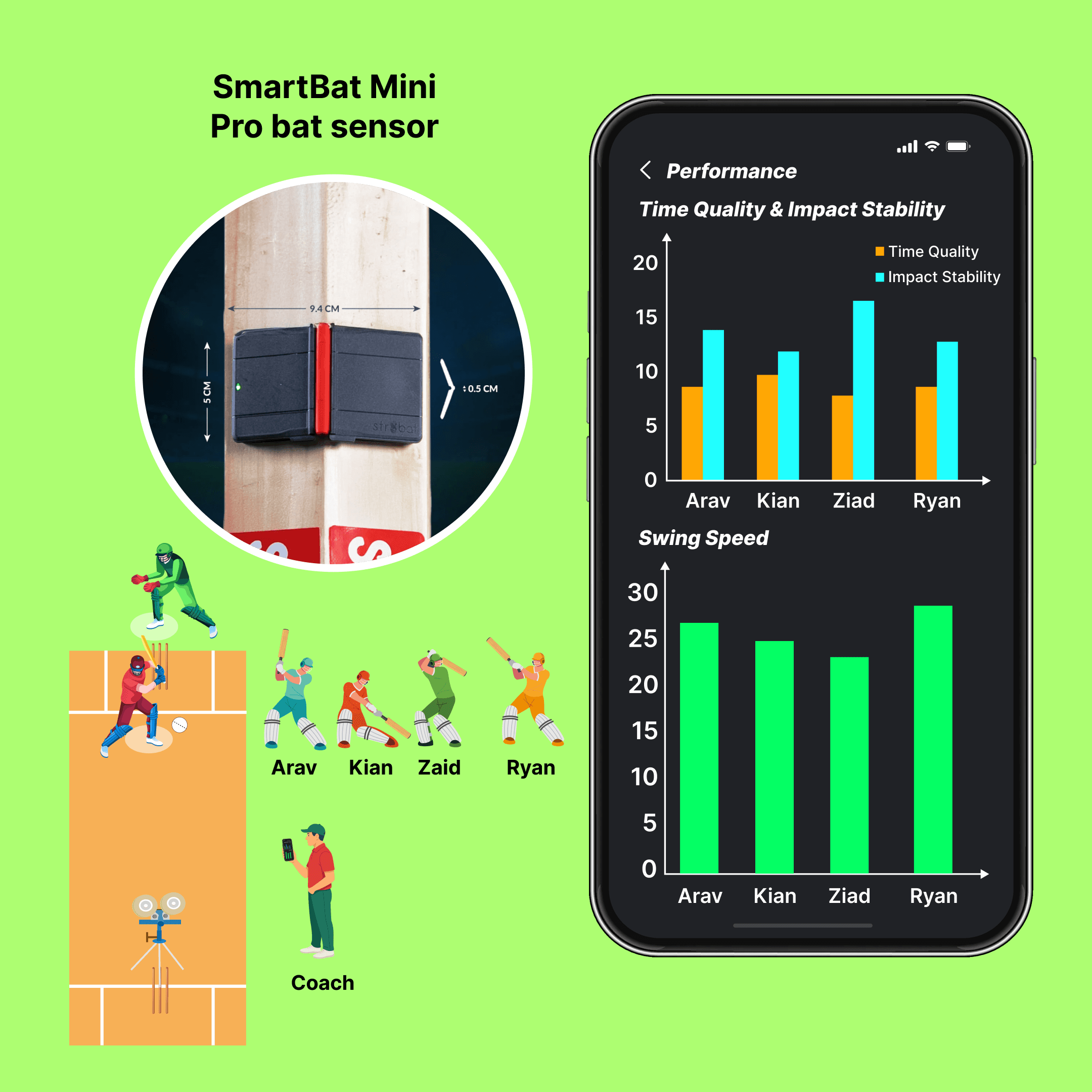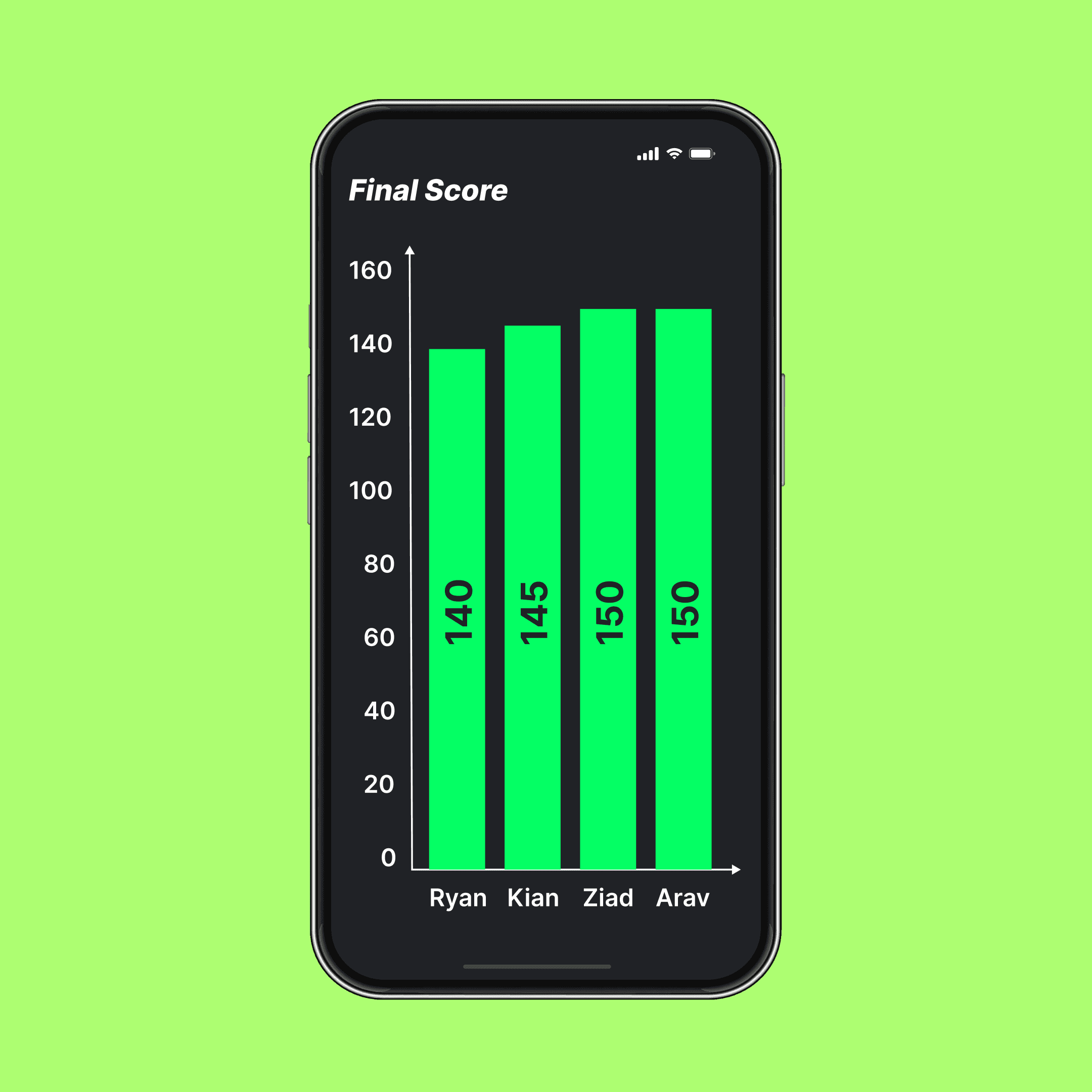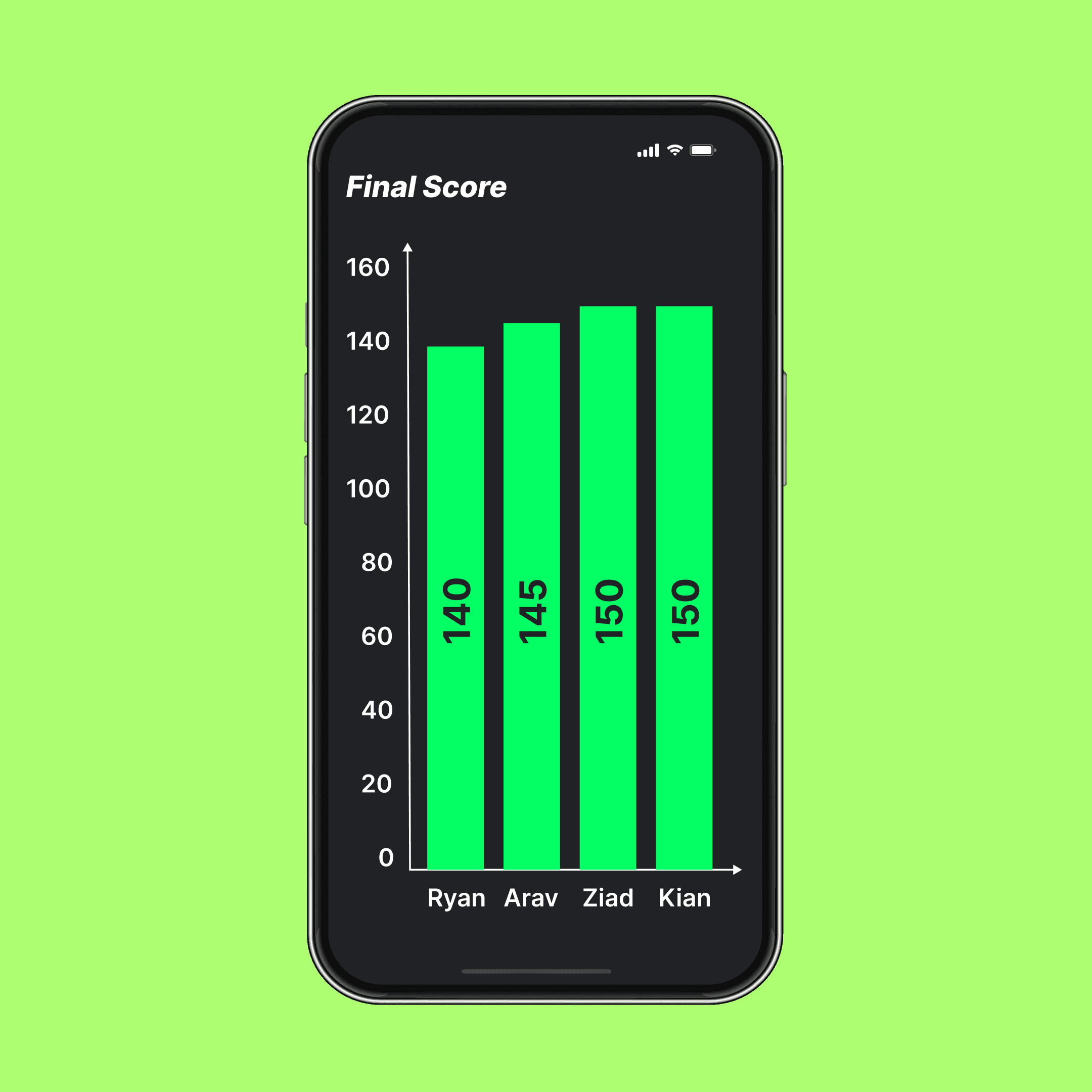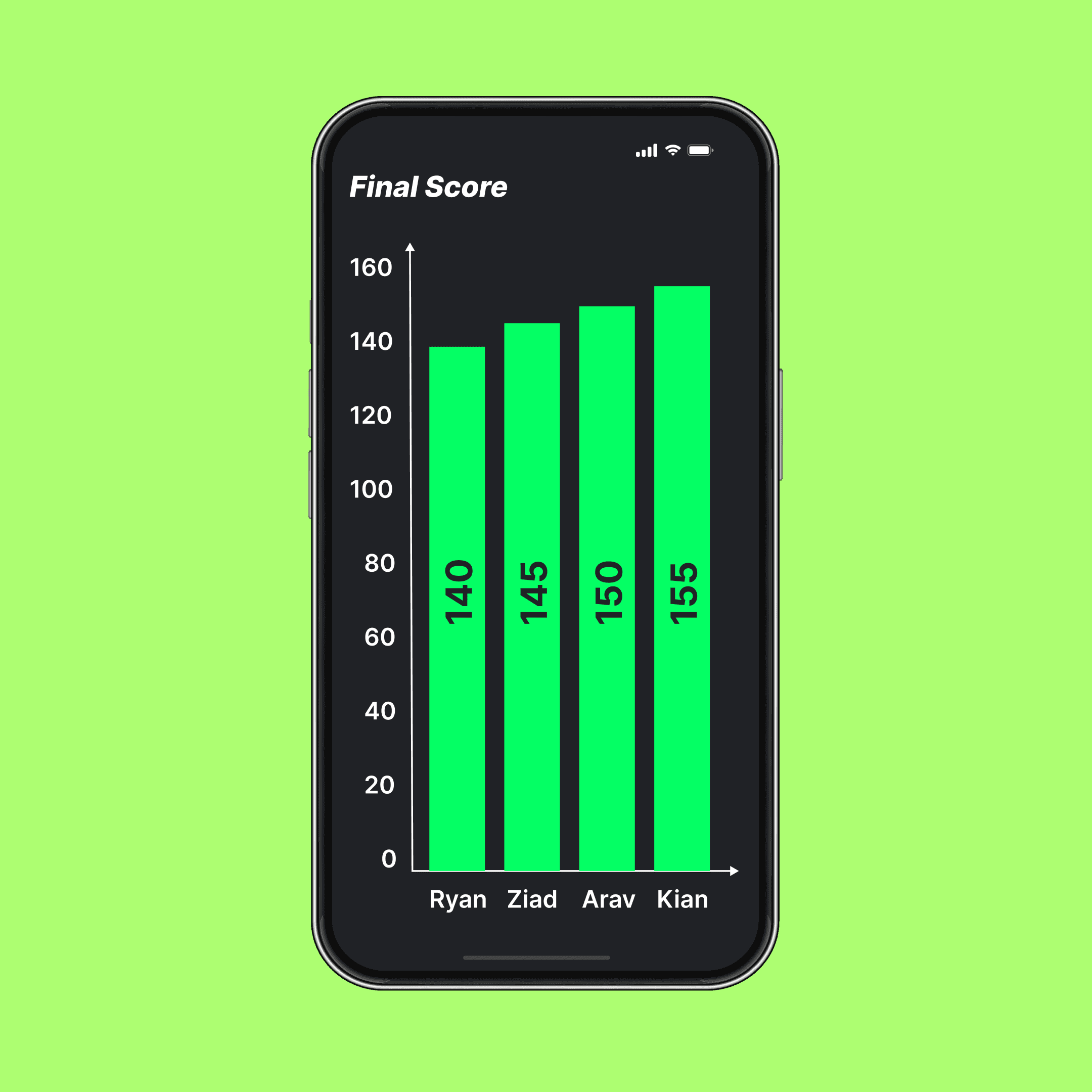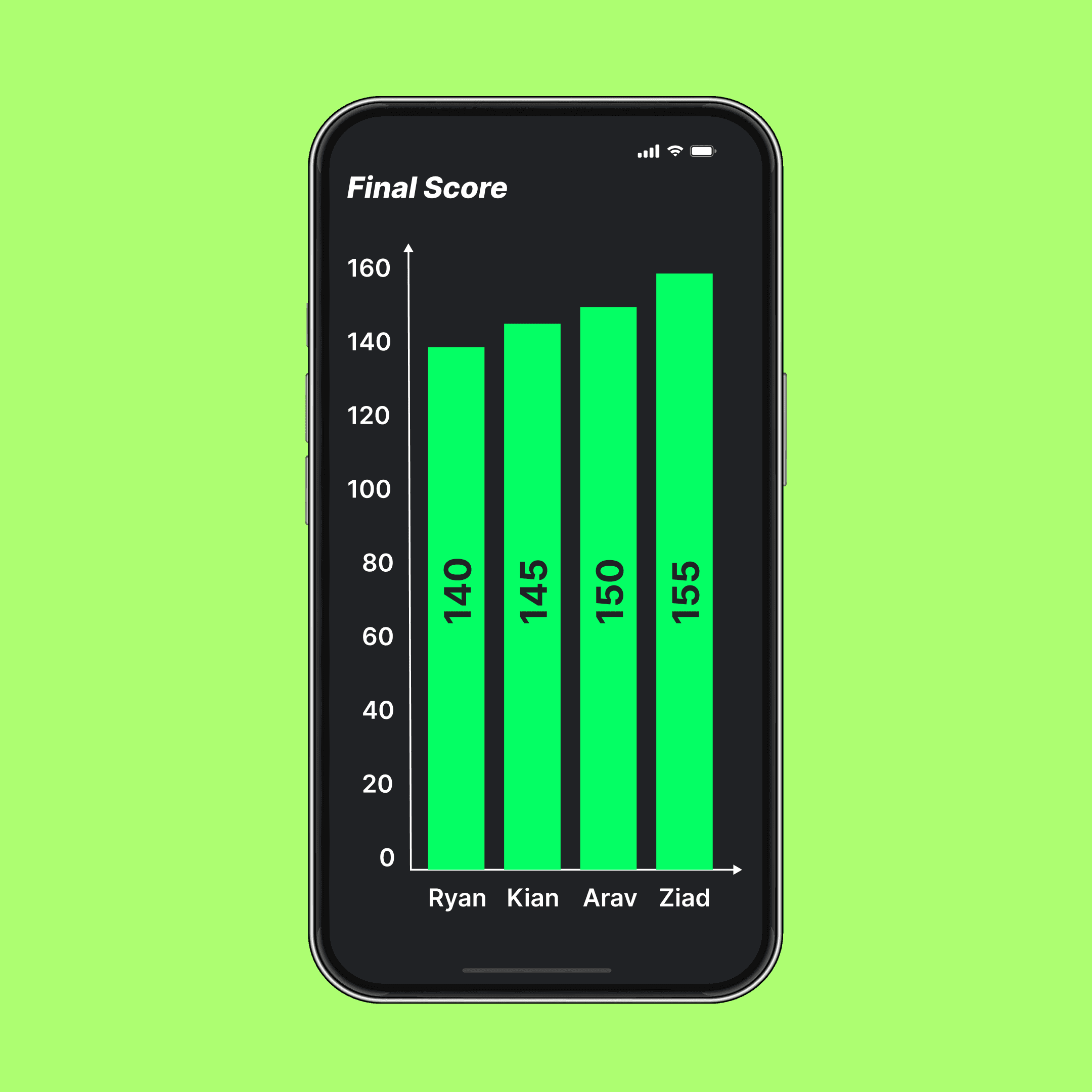IBC Quiz #181
28/11/2025
Adisha R Gowda
Class 8
Prudence International School , Tumkur

Harshith
Class 8
PREETHI PUBLIC SCHOOL
HarshithVardhan M.V
Class 8
The Jain International school Mulbagal
Sakcham G
Class 8
BGS IRS

Rekha CM
Class 8
GR International public school

Devraj
Class 8
New age high School

Lakshmi
Class 8
Sri Vasavi Vidya samsthe sira

Aliya khanum
Class 8
Tahir public school

Harsha S
Class 4
We Care International School

Abhishta Bhat
Class 8
KSVK International School
Note: Quiz prizes will be awarded to ten randomly selected students who submit correct answers before the deadline. Winners will be declared on the website and the weekly newsletter.

.png&w=1080&q=75)
Previous Week Quizzes
IBC Quiz #181
November 28, 2025
Your company is running a stress test on two newly developed quartz analog watches:
- Watch A – Premium model with TCXO (Temperature-Compensated Crystal Oscillator).
- Watch B – Basic model without TCXO (Temperature-Compensated Crystal Oscillator).
A quartz watch keeps time using a 32,768 Hz quartz crystal oscillator.
The circuit counts these vibrations and produces a precise one-second pulse that drives the stepper motor controlling the watch hands.
The TCXO in Watch A uses a thermistor and compensation logic to correct frequency drift caused by temperature changes.
Both watches are placed beside a reference time-standard watch (with perfect accuracy) and were started simultaneously at 12:00 Noon.
Environmental Test Conditions
Because Watch B has no TCXO, its drift varies with temperature. Measurements show the following:
Watch B Temperature-Dependent Drift Profile
- 12:00 Noon – 2:00 PM (2 hour), Temperature: 35°C, Drift: +18,000 ppm
- 2:00 PM – 4:00 PM (2 hour), Temperature: 25°C, Drift: +16,000 ppm
- 4:00 PM – 5:00 PM (1 hour), Temperature: 32°C
Drift: +24,000 ppm
PPM (Parts Per Million) measures the frequency drift of a quartz oscillator and shows how many parts of error occur for every million oscillations, reflecting the accuracy of the timekeeping.
Assume Watch A normally maintains 0 ppm drift as long as the TCXO is functioning correctly.
Impact Event - Watch A Falls
At 3:00 PM, during the test, a technician accidentally knocks Watch A off the table.
After the fall, the watch begins to show abnormal frequency behaviour.
A post-impact measurement shows that from 3:00 PM to 5:00 PM, Watch A develops a constant drift of:
+5,000 ppm (due to mechanical stress on the quartz crystal)
Before 3:00 PM, Watch A operates with 0 ppm drift.
Drift Calculation Formula
To calculate the drift in each segment, use: Time gained = ppm*seconds per hour/1,000,000
Question
At 5:00 PM on the reference watch, the times shown on Watch A and Watch B are checked.
Which of the following options correctly shows how much each watch is ahead of the reference?
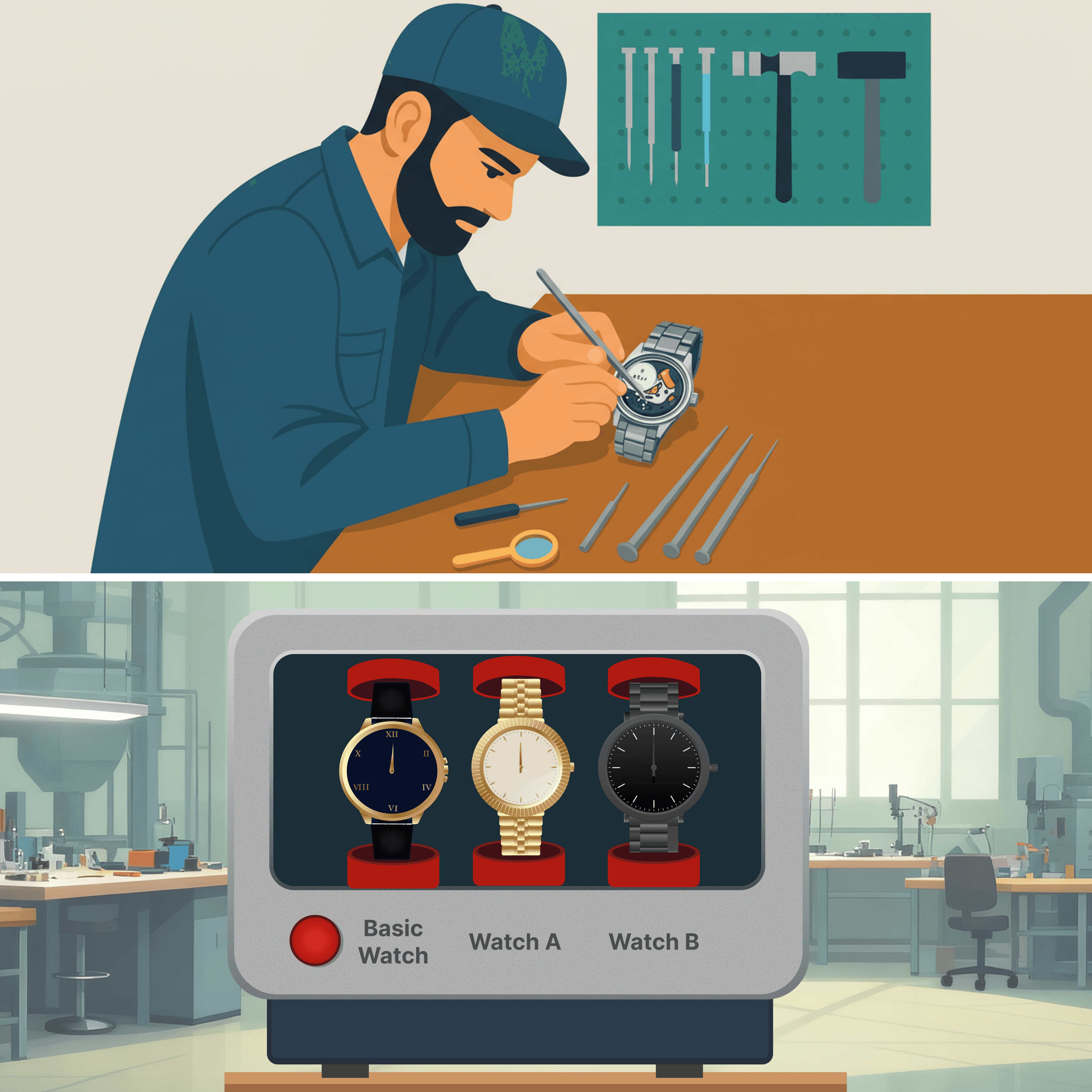


Your company is testing a newly developed quartz analog watch.
A quartz watch keeps time using a battery-powered 32,768 Hz quartz crystal oscillator. The circuit counts these vibrations and produces a precise one-second pulse that drives the stepper motor controlling the watch hands.
During prototype development the engineers left out a TCXO (Temperature-Compensated Crystal Oscillator), that uses a thermistor and compensation logic to correct frequency drift caused by temperature changes.
Without the TCXO, the crystal’s frequency now shifts with temperature, causing the watch to run slightly fast or slow depending on the environment.
During lab testing the following temperature-dependent drift values were recorded:
Temperature-Dependent Drift Profile (TCXO Missing)
- 12:00 Noon – 2:00 PM (2 hour), Temperature: 35°C, Drift: +20,000 ppm
- 2:00 PM – 4:00 PM (2 hour), Temperature: 25°C, Drift: +16,000 ppm
- 4:00 PM – 5:00 PM (1 hour), Temperature: 32°C, Drift: +18,000 ppm
PPM (Parts Per Million) measures the frequency drift of a quartz oscillator and shows how many parts of error occur for every million oscillations, reflecting the accuracy of the timekeeping.
A reference time standard watch with perfect accuracy is placed beside it. Both watches start at exactly 12:00 Noon.
To calculate the drift in each segment, use:
Time Gained = ppm*seconds per hour/1,000,000
Question
Which of the following images correctly shows the watch times at the end of the 5-hour test?




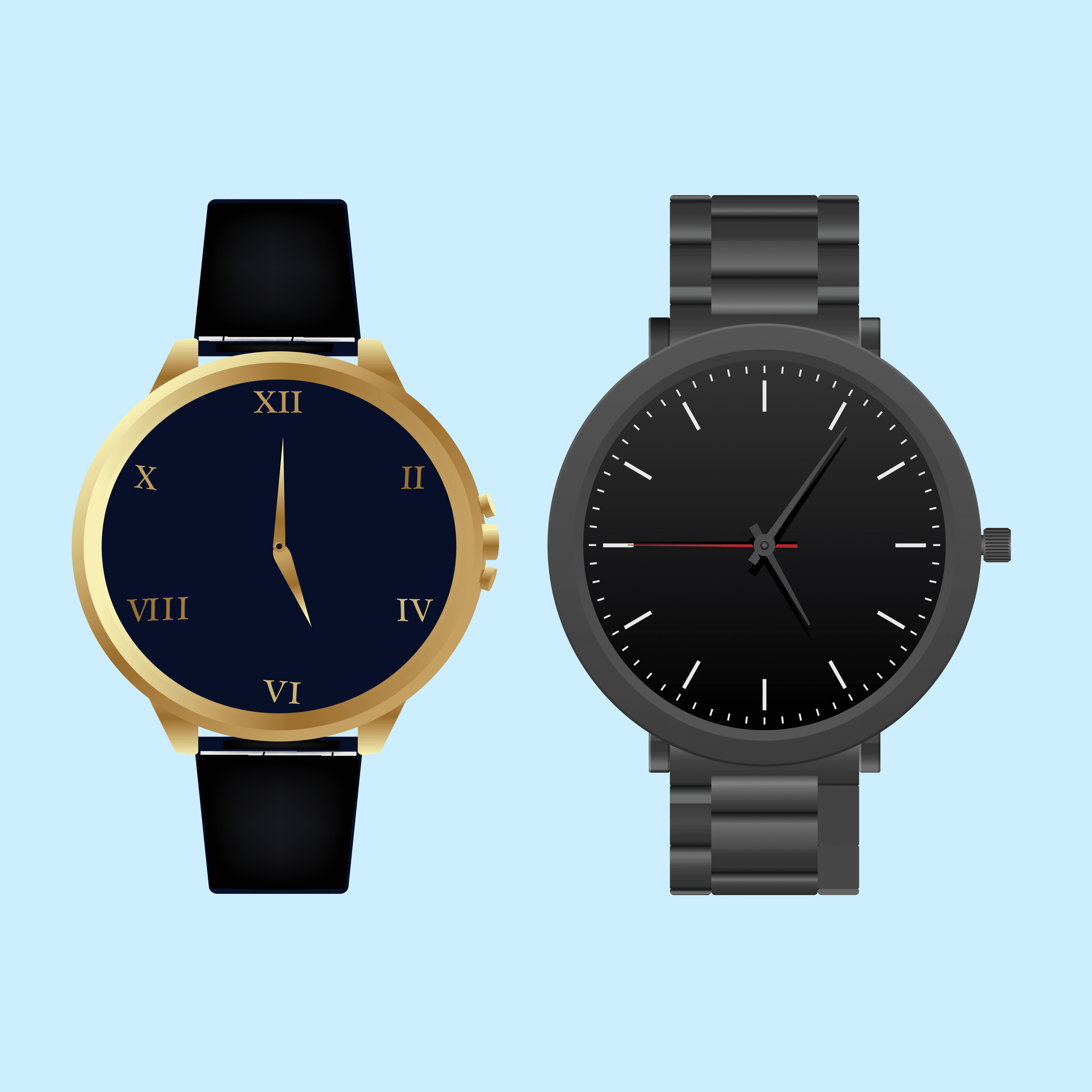
IBC Quiz #180
November 21, 2025
A student team is developing a SmartBat-like sensor system.
During testing, they observed that the app does not simply select the highest value in each metric.
Instead, it calculates performance using these three-stage evaluation rules:
Stage 1 – Timing Consistency Index (TCI)
The priority is the Timing Consistency Index, which reflects how reliably the player connects with the ball at the correct moment.
Since mistimed shots occur when the bat and ball speeds are not aligned properly during impact, the app penalises them.
TCI = (Timing Score − 2 × Mistimed Shots)
Players with higher TCI are ranked higher.
Stage 2 – Sweet-Spot Efficiency (used only if two players tie in TCI)
Efficiency = Sweet-Spot Accuracy + (Middle-Hit Bonus), where Middle-Hit Bonus = 5 points if Sweet-Spot Accuracy is ≥ 60%, otherwise 0.
Final Score – Overall Batting Performance
To compare players easily, the app combines these into a single Final Score:
Final Score = TCI + Sweet spot Efficiency
Players with a higher Final Score are ranked higher.
Stage 3 – If two players still end up with the same Final Score, the app uses Bat Speed as the final tiebreaker. The player with the higher Bat Speed is ranked higher.
Sensor Data Collected:
|
Player |
Timing Score (0–100) |
Mistimed Shots |
Sweet-Spot Accuracy (%) |
Avg Bat Speed (m/s) |
|
Arjun |
82 |
6 |
64 |
27 |
|
Kabir |
78 |
3 |
62 |
28 |
|
Neel |
84 |
8 |
60 |
25 |
|
Rohan |
80 |
4 |
59 |
28 |
What is the correct order of players from lowest to highest performance?
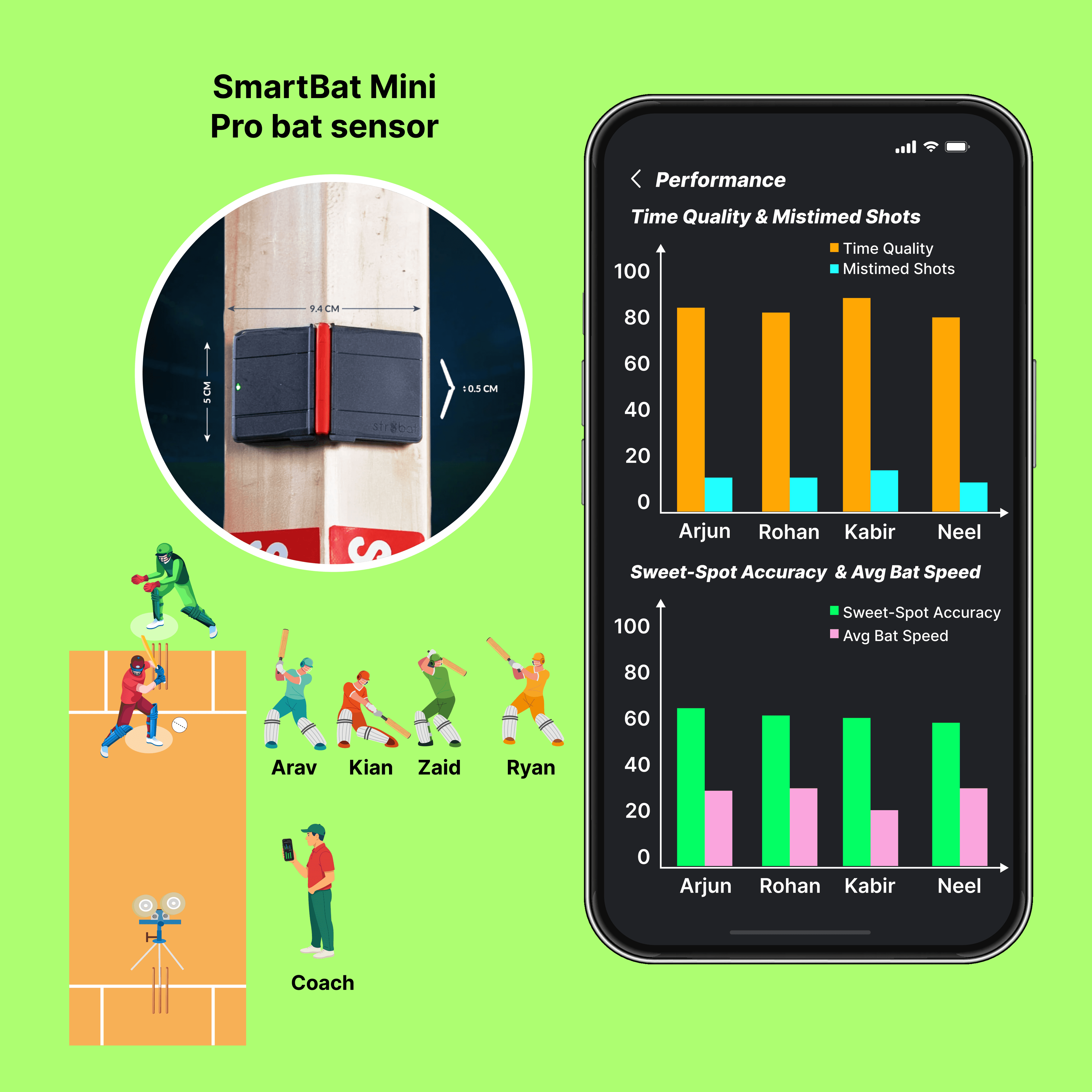
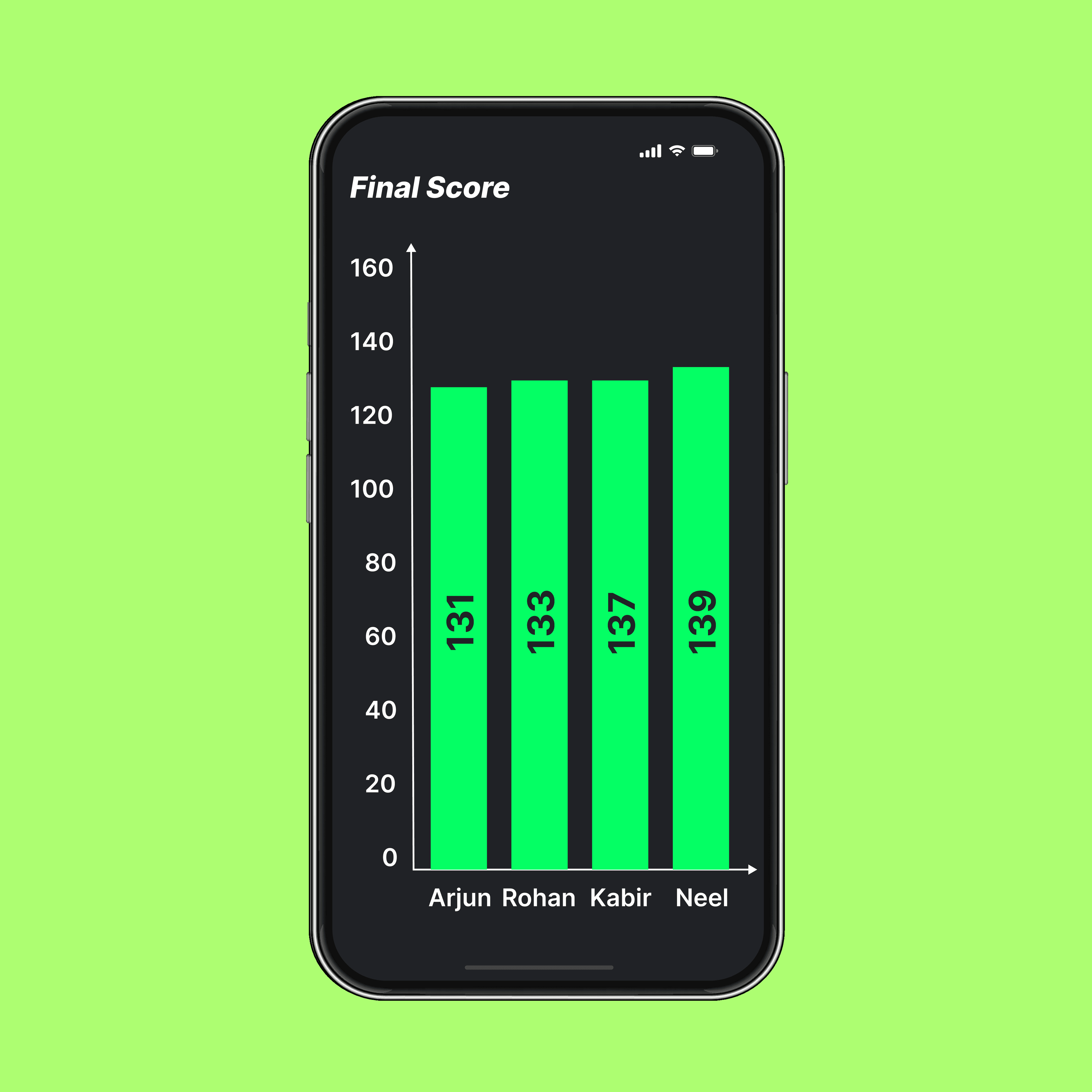
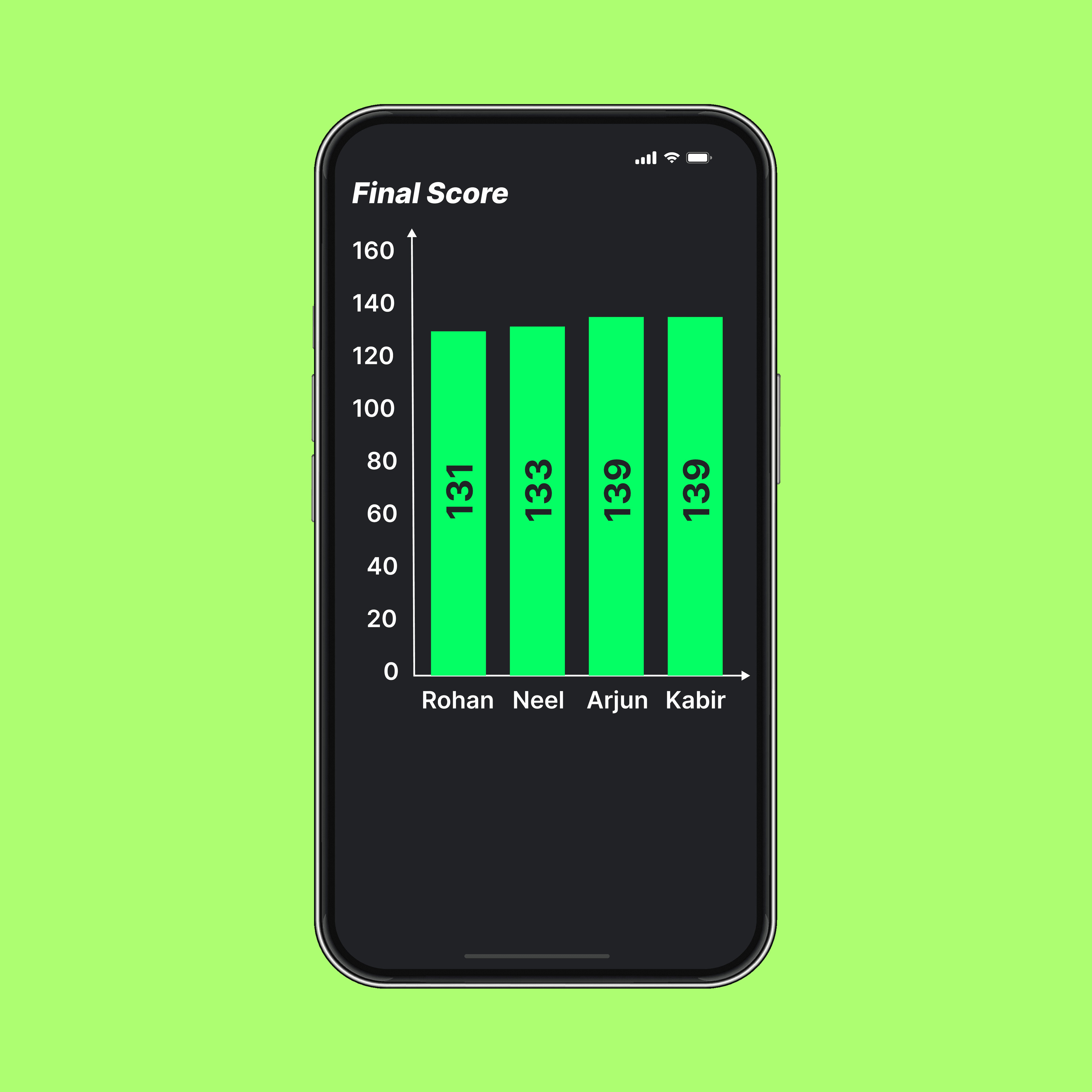
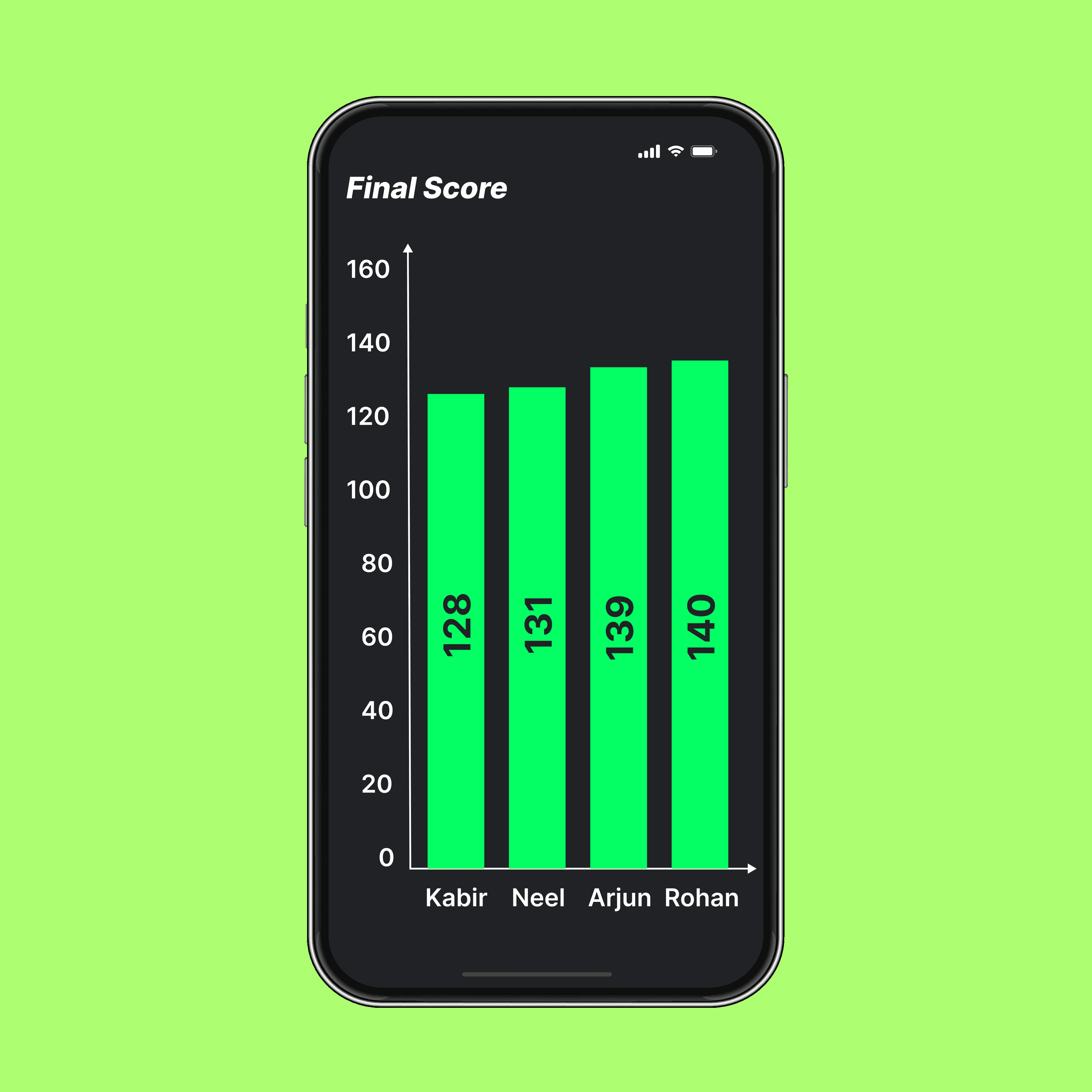
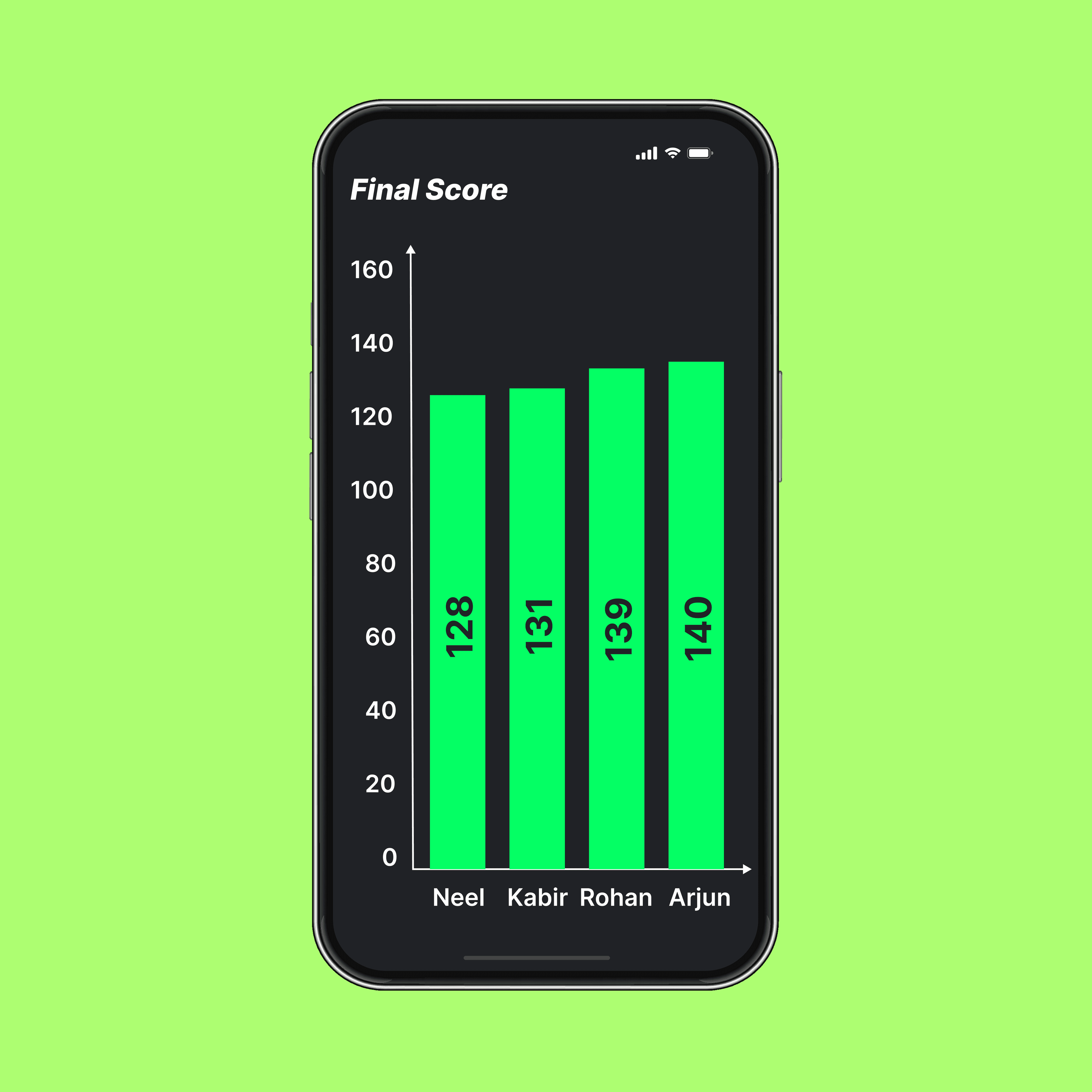
A school tech club is testing their SmartBat Mini Pro bat sensor.
The sensor measures two key batting parameters:
-
Timing Quality (0–10)
-
Impact Stability (0–20)
Timing Quality reflects how well the bat meets the ball at the ideal moment. It mainly depends on the relative speed and alignment of the bat and ball at impact. If the swing is too early or too late, the timing quality score decreases.
Since these two parameters have different maximum values, the SmartBat app first normalises them to 100 so they can be compared fairly.
Normalisation Rules:
-
Timing Quality → multiply by 10 (because 10 × 10 = 100)
-
Impact Stability → multiply by 5 (because 20 × 5 = 100)
Final Score Formula:
Final Score = Normalised Timing + Normalised Stability
If two players receive the same Final Score, the app uses Swing Speed as the tiebreaker.
Sensor Data:
|
Player |
Timing Quality (0–10) |
Impact Stability (0–20) |
Swing Speed (m/s) |
|
Arav |
8 |
14 |
26 |
|
Kian |
9 |
11 |
25 |
|
Zaid |
7 |
16 |
24 |
|
Ryan |
8 |
12 |
27 |
Determine the order of players from lowest to highest performance.
